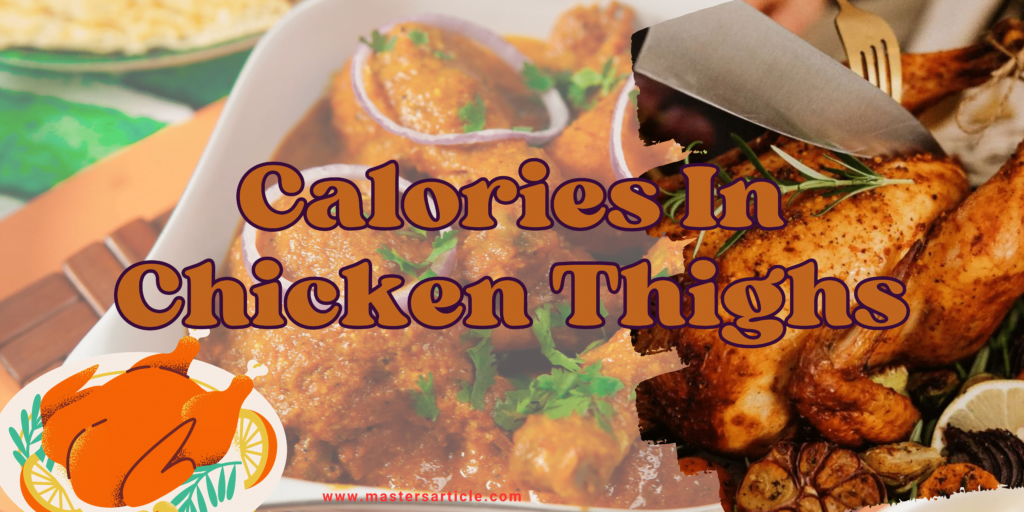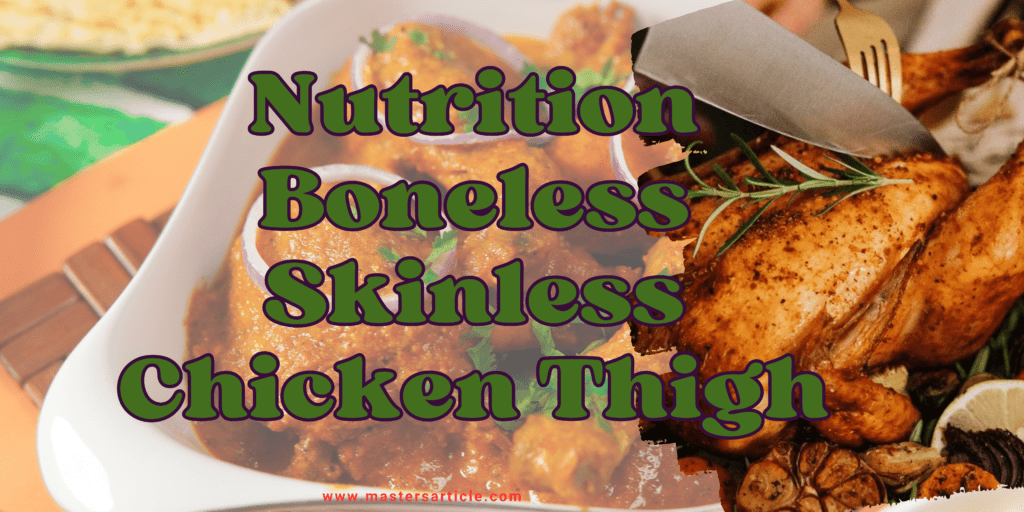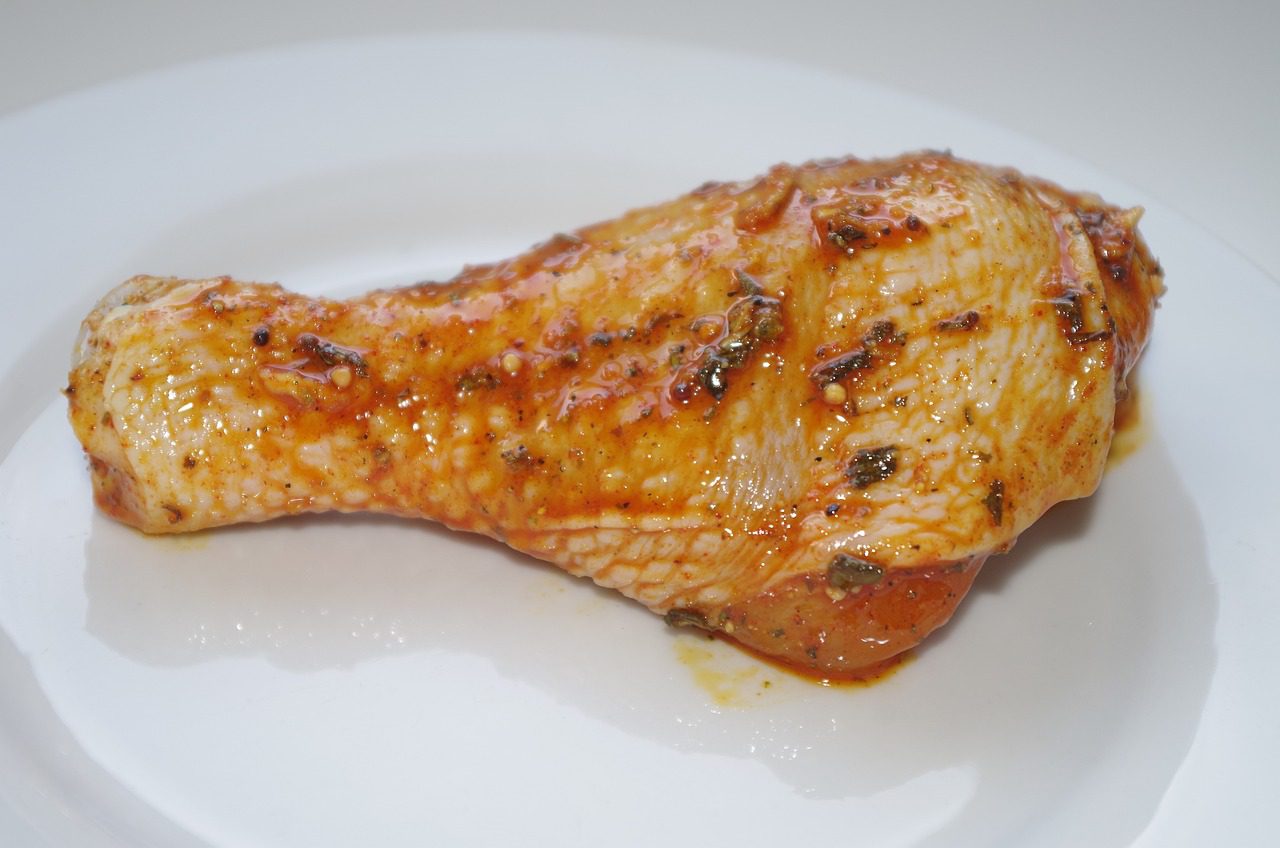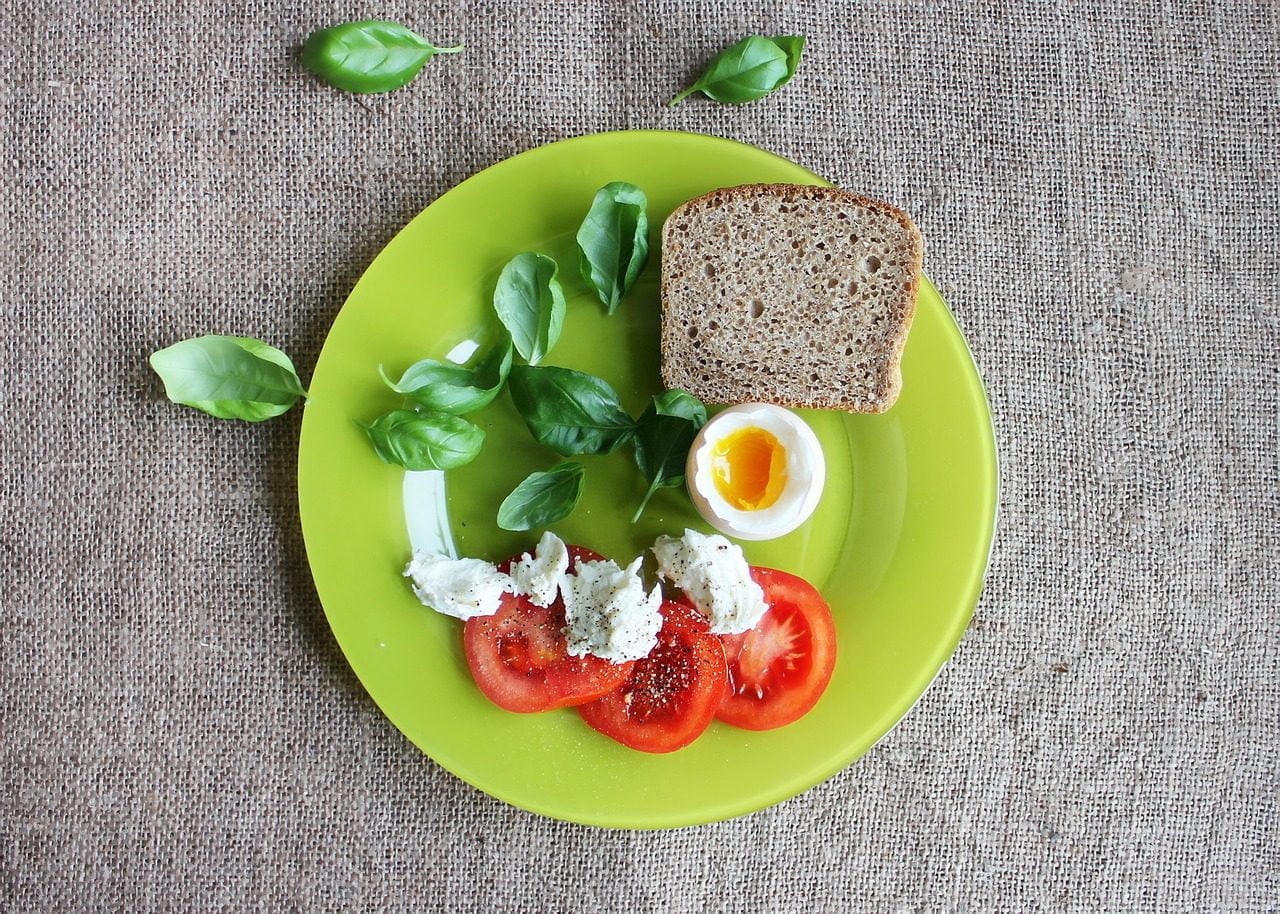Nutrition boneless skinless chicken thigh: When it comes to choosing a protein source, many people get confused with the various options available. Chicken is a popular option due to its versatility and generally healthy profile. However, there’s often a debate about which part to choose chicken. While chicken breast is often referred to as a healthier option, boneless skinless chicken that is becoming popular for its rich taste and gentle texture. But what about their nutritional material? Understanding the number of calories and the specifics like the overall nutrition profile can help you make an informed decision about incorporating them in your diet.
Must read: Age Of Height Growth In Male
Excited: Common misconceptions and concerns
There are many misconceptions about chicken Thai that can cause hesitation. Some people believe that chicken Thai has a lot of fat and calories, so it can’t be considered a healthy option. Others may be uncertain about the actual nutritional difference between chicken Thai and chicken breast. These uncertainties can lead to confusion and poor diet options. Additionally, it is important for people who look at their calorie intake or are trying to lose weight, to have the exact information about the nutritional content of boneless skinless chicken thighs. Without this information, it’s easy to either consume more or avoid it unnecessarily.

Solution: Extensive analysis of chicken thigh nutrition
To remove these misconceptions and provide clarity, let’s dive into the detailed nutrition profile of boneless skinless chicken thighs. This will include calorie content, macronutrient distribution & other essential nutrient-intensive checks. By understanding these details, you can confidently include chicken thighs in your diet and make informed options in line with your health and fitness goals.
Calories: How many calories are there in chicken thighs with no skin?
One of the primary concerns for anyone monitoring their diet is the calorie content of foods they eat. When it comes to boneless skinless chicken thighs, considering the number of calories is an important factor.
A normal 100-gram serving of boneless skinless chicken thighs contains about 177 calories. This makes it a slightly more calorie option than chicken breast, which contains about 165 calories per 100 grams. However, the difference isn’t too high, and both options can fit into a balanced diet.
It is important to note that the number of calories can vary slightly depending on the method of preparation. For example, grilling or baking chicken thighs without putting in extra fat will keep the number of calories lower, while frying or cooking with extra oil can increase the total calorie volume.
Macro-nutrient breakdown: Protein, fat and carbohydrates
Understanding the macro-nutrient structure of boneless skinless chicken thighs can help you see how they fit into your overall diet requirements.
Protein content
Protein is an important nutrient for muscle repair, development & overall physical function. Boneless skinless chicken thighs are an excellent source of high-quality protein. A serving of 100 grams gets about 23 grams of protein. This is a little less than 31 grams found in chicken breast, but it’s still an important amount that can help you meet your daily protein needs.
Fat content
Boneless skinless chicken thighs have more fat content than chicken breast, but it’s important to understand the type of fat that it contains. A serving of 100 grams of chicken thighs contains about 8 grams of fat, with a mixture of saturated and unsaturated fat. Saturated fat amounts to about 2 grams, while the rest is unsaturated fat, which includes heart-healthy monounsaturated and polyunsaturated fats.
Carbohydrate
Chicken thighs like most meat are also virtually carbohydrate-free, making them the suitable choice for low-carb and ketogenic diets. The negligible carbohydrate content ensures that boneless skinless chicken thighs can fit into various diet plans without significantly affecting blood sugar levels.
Essential vitamins and minerals
In addition to macro-nutrients, boneless skinless chicken thighs also contain many essential vitamins and minerals that contribute to overall health.
B Vitamins
Chicken thighs are an excellent source of B vitamins, especially niacin (B3), vitamin B6 & pantothenic acid (B5). These vitamins play a significant role in energy metabolism, brain function & production of red blood cells.
Iron
Iron is necessary for the production of hemoglobin, which takes oxygen in the blood. Boneless skinless chicken thighs contain good amounts of iron, which is particularly beneficial for individuals at risk of iron deficiency, such as women of delivery age and athletes.
Zinc
Zinc is important for the immune system, wound healing & DNA synthesis. Chicken thigh is a good source of zinc, which contributes to the maintenance of a healthy immune system.
Health Benefits of boneless skinless chicken thighs
Including boneless skinless chicken thighs in your diet offers many health benefits besides their nutritional elements.
Muscle growth and repair
The high protein content in chicken thighs makes them an excellent option for supporting muscle growth and repair. Whether you’re an athlete, or bodybuilder, or want to maintain muscle with aging, a protein present in chicken thighs can help you meet your goals.
Weight management
While chicken thighs have a bit more calories than chicken breast, they can still be part of the weight management plan. The main thing is part control and preparation methods. Grilling chicken thighs without excess fat, baking or frying can help control the calorie content. Additionally, the high-fat content in chicken thighs can contribute to a feeling of perfectness, which potentially helps with appetite control.
Heart health
The unsaturated fat in chicken thighs can support heart health when consumed as part of the unsaturated fat balanced diet. Changing saturated fat from other sources with healthy fat found in chicken thighs can help maintain healthy cholesterol levels and reduce heart disease risk.
Practical tips to include chicken thighs in your diet
It’s one thing to know the nutritional benefits of bone-free skinless chicken thighs, but it’s the second thing to include them effectively in their diet. Here are some practical tips that will help you enjoy chicken thighs while keeping your food nutritious and tasty.
Ways of cooking
Choose cooking ways that preserve nutritional content without adding unnecessary calories. Grilling, baking, broiling & steaming are the best options. Avoid cooking with deep-frying or excessive amounts of oil or butter to keep calories low.
Part control
Pay attention to the size of the part to manage your calorie intake. A standard serving size for chicken thighs is about 3-4 ounces (85-113 grams), which provides a good balance of protein and calories.
Balanced food
Include chicken thighs in balanced food combined with various types of vegetables, whole grains, and healthy fats. For example, serve grilled chicken thighs with quinoa and mixed vegetable salad. It not only brings diversity to your diet but also ensures you’re getting many nutrients.
Prepare the food
Chicken thigh is a great option to prepare food. Cook a batch of chicken thighs at the beginning of the week and use them in different recipes throughout the week. They can be added to salad, rap, stir-fries, or eaten alone with vegetables.
Addressing common concerns
Despite many benefits, some individuals may still have concerns about the intake of boneless skinless chicken thighs. Let’s address some of the most common concerns:
Worry: High-fat content
Although chicken thighs have more fat than chicken breast, it’s important to remember that not all fat is bad. Unsaturated fat found in chicken thighs can support heart health and provide the necessary fatty acids. Additionally, the fat content can increase your food’s taste and satisfaction, potentially reducing the need for additional sauces or spices.
Worry: Calories quantity
A bit more calorie content in chicken thighs should not stop you from incorporating them into your diet. By practicing part control and choosing healthy cooking methods, you can enjoy the rich taste and nutritional benefits of chicken thighs without surpassing your calorie goals.
Worry: Nutritional comparison with chicken breast
While chicken breasts are often considered lean options, chicken thighs provide unique nutritional benefits, such as high iron and zinc content. Both options can be part of a healthy diet, and the choice ultimately depends on your personal priorities and nutritional needs.

Conclusion on Nutrition boneless skinless chicken thigh | Chicken thigh nutrition boneless skinless
Boneless skinless chicken thighs are a nutritious and tasty option that can fit into a variety of diet plans. They provide a good balance of protein, healthy fat & essential vitamins and minerals. By understanding their nutritional profiles and incorporating them into balanced food, you can enjoy their rich taste while supporting your health and fitness goals.
Whether you want to build muscle, control your weight, or just want to enjoy a delicious protein source, boneless skinless chicken thigh is a versatile and nutritious option. Don’t stop misconceptions or concerns from incorporating this delicious protein into your diet. With correct preparation methods and part control, you can enjoy the benefits of chicken thighs and increase your overall nutrition.
You can also read: Chest Workout At Home For Ladies
FAQ on Boneless skinless chicken thigh calorie | Calories in chicken thighs without skin
What is the amount of calories in boneless skinless chicken thighs?
Answer: The calorie content of boneless skinless chicken thighs is an important idea for those who monitor their diet. The service of 100 grams of bonless skinless chicken thighs contains about 177 calories. This makes them a slightly more calorie option than chicken breast, which contains about 165 calories per 100 grams. However, the difference isn’t too high and can fit into a balanced diet.
How is the nutrition of boneless skinless chicken thighs compared to chicken breast?
Answer: Bonless skinless chicken thighs have a different nutrition profile compared to chicken breasts. While both are excellent sources of protein, thighs have a bit more fat and calories. The 100 grams of chicken thighs contain about 23 grams of protein and 8 grams of fat, while the chicken breasts contain about 31 grams of protein per 100 grams and 3.6 grams of fat. Some vitamins and minerals like iron and zinc are also in higher amounts.
Are boneless skinless chicken thigh protein a good source?
Answer: Yes, boneless skinless chicken thighs are a very good source of high quality protein. 100 grams of serving contains about 23 grams of protein, which is necessary for muscle repair, growth & overall function of the body. This makes them an excellent option for those who want to increase their protein intake.
What kind of fat is found in boneless skinless chicken thighs?
Answer: Bonless skinless chicken thighs contain a mixture of saturated and unsaturated fat. 100 grams of serving contains about 8 grams of fat, which contains about 2 grams of saturated fat. The remaining fat is a combination of monounsaturated and polyunsaturated fat, considered heart-healthy. These can help to support fat overall health when consumed in moderation as part of a balanced diet.
Are there carbohydrates in boneless skinless chicken thighs?
Answer: No, boneless skinless chicken thighs don’t have significant amounts of carbohydrates. Like most meat, they’re virtually carbohydrate-free, making them the suitable choice for low-carb and ketogenic diets. Their negligible carbohydrate content ensures they fit well into various diet plans without affecting blood sugar levels.
What vitamins and minerals are present in boneless skinless chicken thighs?
Answer: Boneless skinless chicken thighs are rich in several essential vitamins and minerals, including:
- B vitamins: especially niacin (B3), vitamin B6 & pantothenic acid (B5), which are important for energy metabolism, brain function & red blood cell production.
- Iron: is important for the production of hemoglobin, which takes oxygen in the blood.
- Zinc: Immune function, is important for wound healing and DNA synthesis.
These nutrients contribute to the overall health benefits of incorporating chicken thighs into your diet.
How can boneless skinless chicken thigh support muscle growth and repair?
Answer: The high protein content in boneless skinless chicken thighs makes them an excellent choice to support muscle growth and repair. Protein is necessary for the maintenance and construction of muscle tissues. Whether you’re an athlete, bodybuilder, or just want to maintain muscle with aging, protein present in chicken thighs can help you meet your goals.
Can boneless skinless chicken thighs be part of the weight management plan?
Answer: Yes, boneless skinless chicken thighs can be part of the weight management plan. Although they’re a bit more in calories and fat than chicken breasts, they can still fit into a balanced diet when consumed in moderation. The main thing is to choose part control and healthy cooking methods, such as grilling, baking, or broiling without the inclusion of excessive fat.
Does eating boneless skinless chicken thighs have any heart health benefits?
Answer: Yes, boneless skinless chicken can support heart health when involved in an unsaturated fat-balanced diet. Using healthy fat found in chicken thighs in place of saturated fats from other sources can help maintain healthy cholesterol levels and reduce heart disease risk. Additionally, the presence of essential nutrients such as B vitamins and zinc contributes to overall heart health.
How can I cook boneless skinless chicken thighs to maintain their nutritional value?
Answer: To maintain the nutritional value of boneless skinless chicken thighs, select cooking methods that don’t add excessive calories. Grilling, baking, broiling & steaming are the best options. Avoid using deep-frying or large amounts of oil or butter. You can also season them with herbs and spices to increase taste without extra calories.
What is the best way to control parts while eating boneless skinless chicken thighs?
Answer: Part control is important to manage calorie intake. A standard serving size for chicken thighs is about 3-4 ounces
You can also read:
What is the difference between weight loss and fat loss?
Advantage Of Drinking Turmeric Milk
Best Language For Android Development in 2024
What is Physical Science: Study of Matter and Energy
10 Uses of Artificial Intelligence in Our Daily Life
Ashwagandha Can Increase Height










Leave a Reply